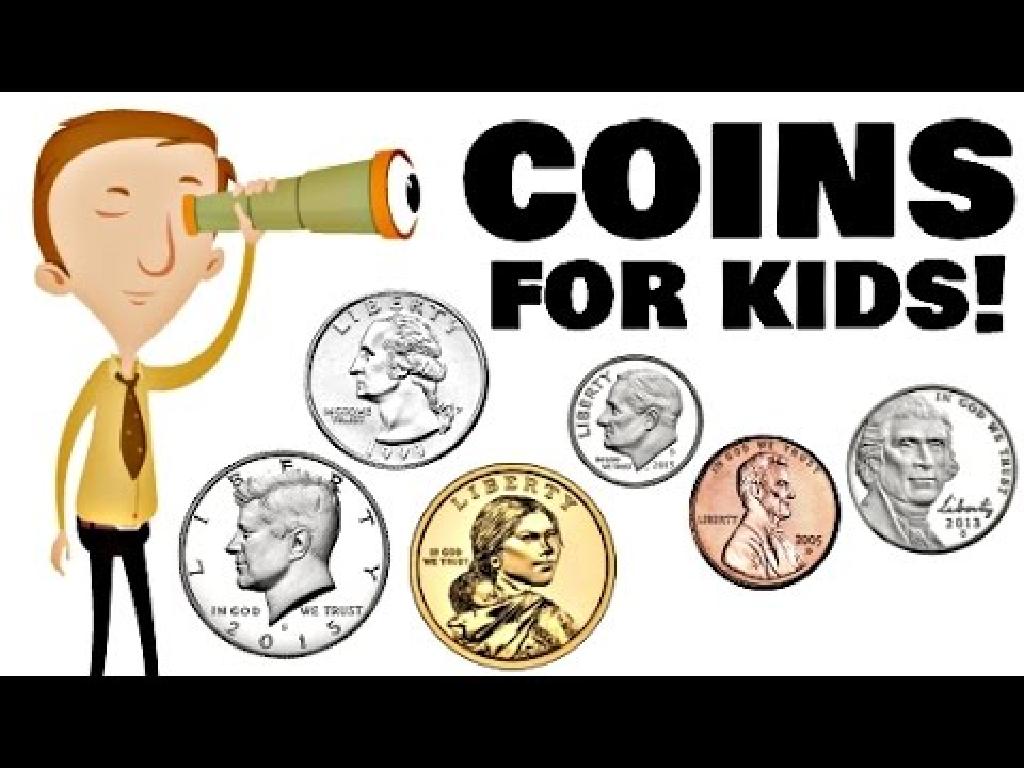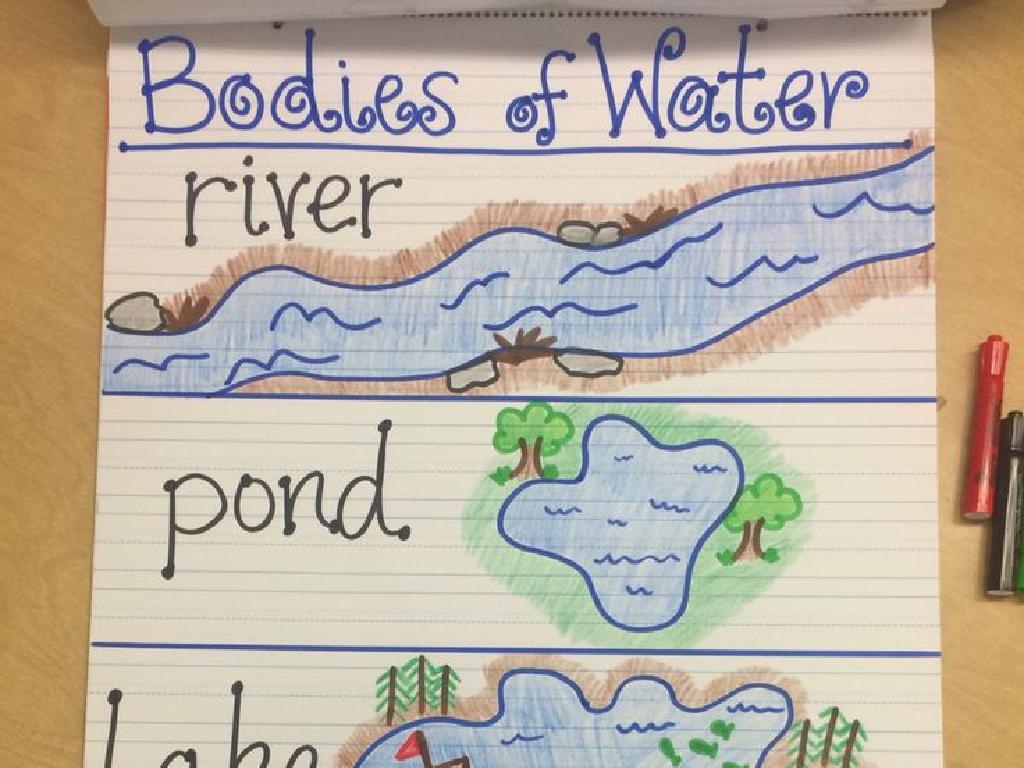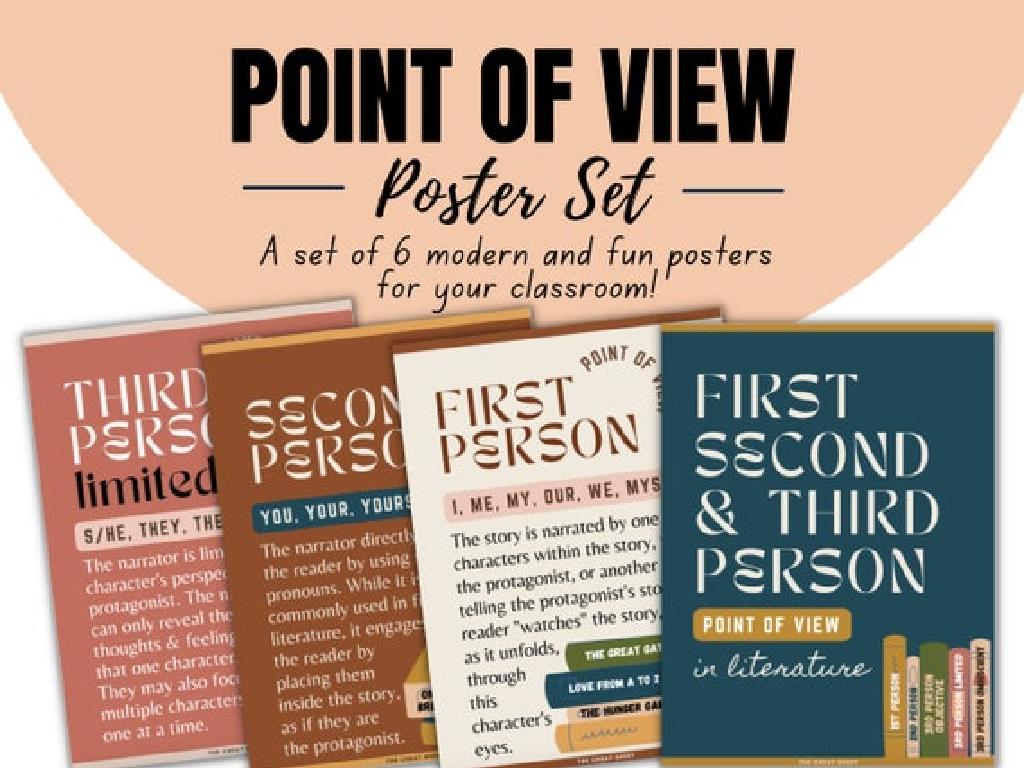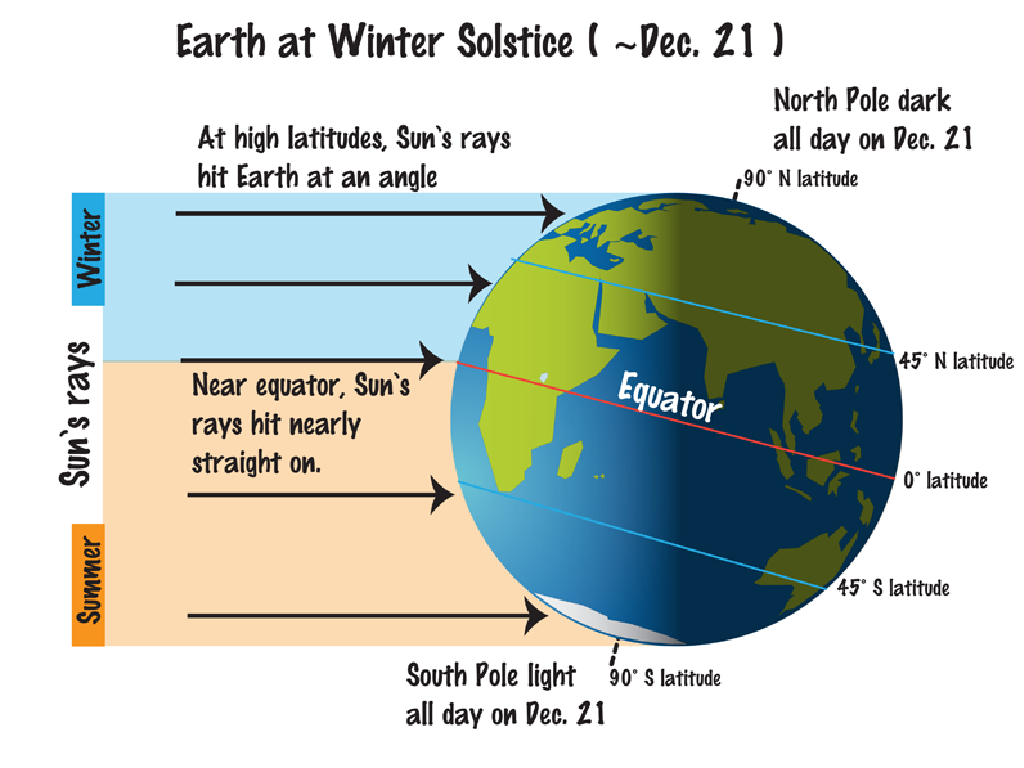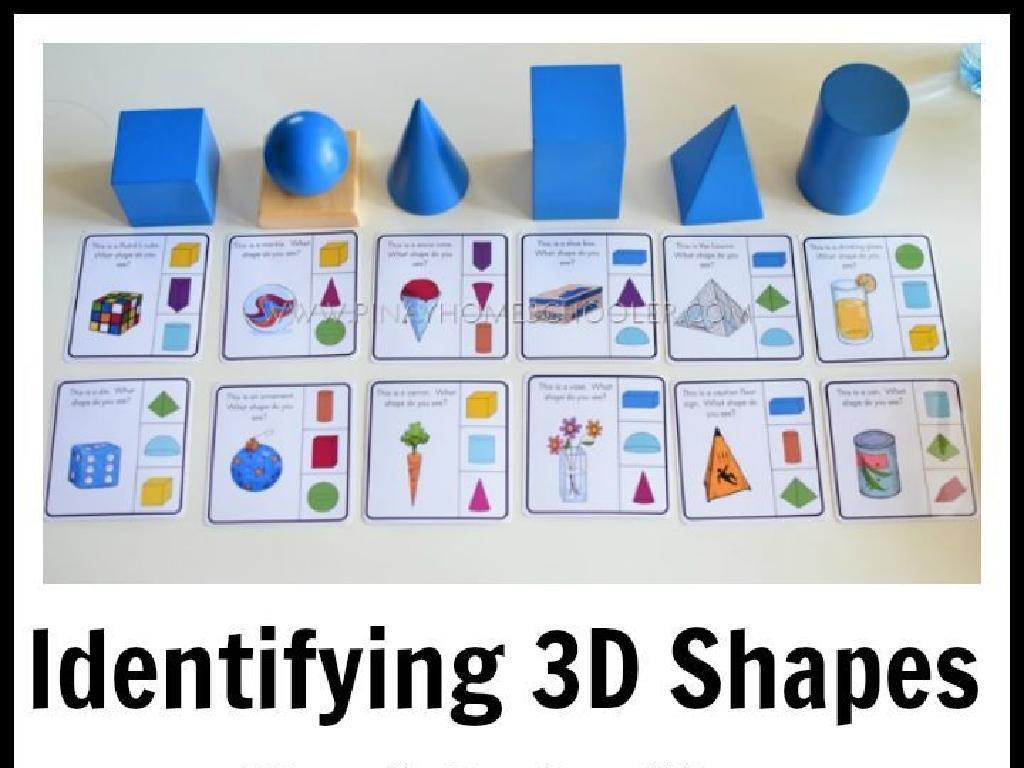Volume Of Cubes And Rectangular Prisms: Word Problems
Subject: Math
Grade: Fifth grade
Topic: Volume
Please LOG IN to download the presentation. Access is available to registered users only.
View More Content
Welcome to Volume Exploration!
– What is Volume?
– Volume measures how much space an object occupies.
– Exploring Cubes & Rectangular Prisms
– Cubes have equal sides, prisms have different length, width, height.
– Volume in the Real World
– Used in filling pools, shipping packages, pouring liquids.
– Solving Volume Word Problems
– Use volume formulas to solve problems in stories.
|
This slide introduces the concept of volume and its importance in both mathematical theory and real-world applications. Begin by explaining volume as a measure of the space within a 3D object. Highlight the specific shapes for today’s lesson: cubes and rectangular prisms, and discuss their properties. Emphasize how understanding volume is crucial in everyday situations such as determining the amount of water a pool can hold or the capacity of a shipping box. Conclude by explaining that students will learn to apply volume formulas to solve practical word problems, enhancing their problem-solving skills. Encourage students to think of examples where they encounter volume in their daily lives.
Exploring Volume: Cubes & Rectangular Prisms
– Volume: space an object occupies
– Volume is measured in cubic units because it represents three-dimensional space.
– Imagine filling a box with cubes
– Think of how many small cubes (1x1x1) can fit inside without gaps or overlaps.
– Measure volume in cubic units
– Units such as cubic meters (m³), cubic centimeters (cm³), or cubic inches (in³) are used.
– Examples: cubic meters, cubic centimeters
|
This slide introduces the concept of volume to fifth-grade students, explaining that volume measures the amount of space an object occupies. Use a relatable example such as how many small cubes can fit inside a larger box to illustrate the concept. Emphasize that volume is always measured in cubic units because we are dealing with three dimensions: length, width, and height. Provide examples of different units of volume and explain that the choice of unit depends on the size of the object being measured. Encourage students to visualize the process of filling a box with cubes to better understand how volume is determined.
Calculating Volume of a Cube
– All cube sides are equal
– Volume formula: side³
– Multiply the length of one side by itself three times.
– Example: side is 3 cm
– A cube with a side length of 3 cm.
– Cube volume: 27 cm³
– 3 cm × 3 cm × 3 cm equals twenty-seven cubic centimeters.
|
This slide introduces the concept of volume for a cube, which is a special case in geometry where all sides are of equal length. The volume is found by raising one side to the third power, which is equivalent to multiplying the side length by itself three times. Use the example of a cube with a 3 cm side to illustrate the calculation. Have students practice with cubes of different sizes, and ensure they understand that volume is a measure of space and is expressed in cubic units. Encourage them to visualize filling the cube with unit cubes to better grasp the concept of volume.
Calculating Volume of Rectangular Prisms
– Rectangular prism sides vary
– Volume formula: length × width × height
– Example calculation
– For a prism with sides 5 cm, 3 cm, 2 cm, volume is 5×3×2 = 30 cm³
– Practice with different sizes
– Try finding volume for prisms with sides of various lengths
|
This slide introduces the concept of volume for rectangular prisms, emphasizing that the sides can have different lengths. The formula for calculating volume is presented in a straightforward manner: length times width times height. An example is provided to illustrate how to apply the formula, using a prism with sides measuring 5 cm, 3 cm, and 2 cm, resulting in a volume of 30 cubic centimeters. Encourage students to practice with prisms of different sizes to reinforce the concept. The teacher should prepare additional word problems for students to solve, ensuring they understand how to apply the formula in various contexts.
Volume of Cubes: Solving Word Problems
– Understand the word problem
– Identify the length of one side of the cube
– Apply the volume formula
– Use the formula V = side³ to calculate volume
– Work through an example
– Example: A cube has a side length of 3 inches, what is its volume?
– Practice with homework problems
– Try solving problems in your workbook for more practice
|
This slide is aimed at helping students tackle word problems involving the volume of cubes. Start by reading the problem carefully and identifying the given side length of the cube. Then, apply the volume formula (V = side³) to find the volume. Walk through an example problem as a class, ensuring to demonstrate each step clearly. For instance, if a cube has a side length of 3 inches, its volume would be 3 inches x 3 inches x 3 inches = 27 cubic inches. After the example, assign a few problems for homework to reinforce the concept. Encourage students to visualize the cube and its dimensions as they work through the problems.
Volume of Rectangular Prisms: Word Problems
– Understand the problem’s details
– Identify the length, width, and height in the problem
– Apply the volume formula
– Use the formula: Volume = length × width × height
– Work through an example problem
– Example: A box is 3ft long, 2ft wide, and 1ft high. Volume = 3 × 2 × 1 = 6 cubic feet
– Practice with real-world problems
|
This slide introduces students to solving word problems involving the volume of rectangular prisms. Start by guiding students to carefully read the problem and identify the given dimensions. Emphasize the importance of understanding what is being asked before attempting to solve the problem. Next, demonstrate the application of the volume formula by plugging in the identified dimensions. Work through the provided example problem step by step, ensuring students follow the process. Finally, encourage students to apply this knowledge to real-world scenarios, reinforcing the concept that volume measures how much space an object occupies. Provide additional practice problems for students to solve independently or in groups, and be ready to assist if they encounter difficulties.
Comparing Volumes of Shapes
– Shapes with equal volume
– Different shapes can hold the same amount, like a tall glass and a short bowl.
– Fitting cubes into shapes
– Use small cubes to fill various containers to see how many fit.
– Discussion on volume importance
– Understanding volume helps in packing, storing, and building.
– Volume in real-world scenarios
|
This slide aims to demonstrate that different shapes can have the same volume. Students will engage in an activity where they fit the same number of small cubes into variously shaped containers, which will help them visualize and understand the concept of volume. Discussing the importance of volume in real-life contexts, such as packing items into boxes or filling containers with liquid, will help students grasp why volume is a crucial concept in mathematics and everyday life. Encourage students to think of situations where they have encountered volume decisions, like choosing the right size of a lunch box or a drink container.
Let’s Practice Volume Calculation!
– Calculate classroom object volumes
– Pair up for volume word problems
– Find the length, width, and height of objects, then use V = l × w × h
– Discuss solutions with your partner
– Talk about how you got your answers
– Share findings with the class
|
This slide introduces a hands-on class activity focused on calculating the volume of various objects found in the classroom. Students will work in pairs to solve word problems related to volume, allowing them to apply the formula for volume of cubes and rectangular prisms (V = length × width × height) in a collaborative setting. After solving the problems, they will discuss their methods and answers with their partner, promoting peer learning. Finally, each pair will share their findings with the class, fostering a supportive environment where students can learn from each other’s approaches. For the teacher: Prepare a list of objects for volume measurement, ensure pairs are working effectively, and facilitate the sharing session at the end, highlighting different problem-solving strategies used by students.
Homework: Mastering Volume Word Problems
– Practice volume word problems
– Study for the upcoming volume quiz
Review today’s examples and try new problems
– Compile questions on volume
Write down any difficulties to discuss
– Bring notes to the next class
|
For homework, students should solve additional word problems to reinforce their understanding of calculating volume for cubes and rectangular prisms. Encourage them to use the strategies learned in class and to review their notes. They should also prepare for a quiz during the next class by studying the formulas and practicing with various problems. Students are advised to write down any questions or areas of confusion they encounter while practicing so that these can be addressed in the following lesson. This will ensure they have a solid grasp of the concept before moving on to more complex material.
Class Activity: Build and Calculate Volume
– Build a cube with blocks
– Construct a rectangular prism
– Calculate the volume of each shape
– Volume = length x width x height
– Discuss dimension changes on volume
– Does volume increase or decrease?
|
This hands-on activity is designed to help students understand the concept of volume through tactile learning. Provide students with blocks to construct a cube and a rectangular prism. Once built, guide them to measure the dimensions and calculate the volume of each shape using the formula (Volume = length x width x height). After the calculation, lead a discussion on how changing one or more dimensions of the shape affects the volume. Does making one side longer while keeping the others the same increase the volume? What happens if you make one side shorter? Encourage students to think critically about the relationship between the dimensions of a shape and its volume. Possible activities include varying the number of blocks to create different-sized cubes and prisms, comparing volumes of different shapes, and predicting volume changes before measuring.

